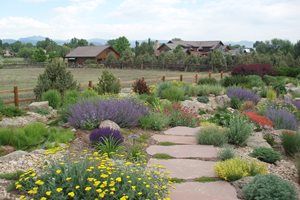Extra Reasons for NOT Purchasing Landscape Textile
Without damaging these roots, do your best to very carefully cut away any little bits of textile around the plants. Additional info There are valid factors for eliminating landscape fabric, or preventing its use completely. Gradually, landscape material can degrade, leaving openings that weeds expand with. Torn bits and also creases of abject landscape textile can make even a freshly mulched bed appearance shabby. Plastic tarpaulins are often utilized rather than landscape design material, which can permit weed roots to penetrate with time.
Most garden enthusiasts agree that the best area for landscape textile is around trees as well as shrubs where it can be mounted as well as covered with high quality compost to with any luck last for years. It's not recommended for vegetable yards or annual flower beds due to the fact that it's intended to be left in location.

The Shared WF200 landscape design textile is so solid that it can manage the weight of heavy machinery without ripping. It can be utilized for driveways, keeping wall surfaces, and a base for heavy rocks.
All you need to do to have an attractive yard is to simply staple the obstacle right into the dirt and also eliminate the components where you intend to grow your blossoms as well as plants. For this very reason, the first top priority of any type of garden enthusiast ought to be to secure their plants from such weeds.
When should you not use landscape fabric?
If you choose to lay new fabric, use only top quality landscape fabric. Pin down the new fabric tightly, with no wrinkles, and https://archerudpl225.shutterfly.com/26 then recover the area with rock or mulch. Be especially careful when pulling up landscape fabric around existing plants. Plant roots may have grown through the old landscape fabric.
- Location a 2- to 3-inch layer of compost in addition to the plastic tarp.
- Bring a remedy of regarding 1 mug salt in 2 cups water to a boil.
- Present the landscape textile so it is alongside the long measurement of the location.
- I have actually increased beds with subterraneous irrigation and piping for aeration under the weedcloth.
Will landscaping fabric kill grass?
In permanent landscapes, plant roots will grow into and through the Visit this site landscape fabric. At some point in the future when it is replaced (needs to be replaced every 10 years or so), you will damage the roots.
Depending on the location of your yard, the visual influence of the compost you select may be substantial. Landscape fabric breathes conveniently and lasts long enough that adding a layer of ornamental mulch makes sense.
Seeing the outright mess and also the monitoring methods that brought about it has motivated me to share some pros & disadvantages regarding the use of landscape material. The barriers by nature, are undoubtedly unpleasant. You can try to cover them utilizing rocks, compost or soil but there's always a chance that the product will show up. The major drawback of weed obstacles is that no matter how good the quality is, there is always a possibility, however small, for the weeds to grow. Any small opening in the obstacle can result in costing you a whole lot.
Is plastic or fabric better for landscaping?
Landscape fabric inhibits water from getting to the roots of your plants. With fabric, plants are forced to grow roots along the surface directly under the fabric to get water. Plants will struggle and many will eventually die, 2.
Enable these to complete your beds, choking out any kind of weeds that make their way right into your residential property. To cover huge locations of ground, without depending on lawn, consider utilizing ground covers.